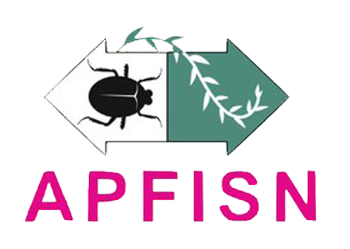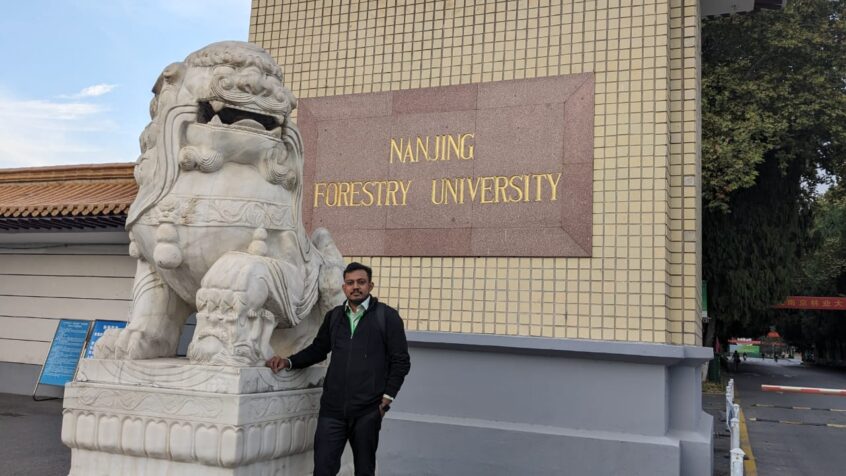By Dr. Jithu U. Krishnan (Ph.D., FIISc), Forest Health Division, Kerala Forest Research Institute, Government of Kerala
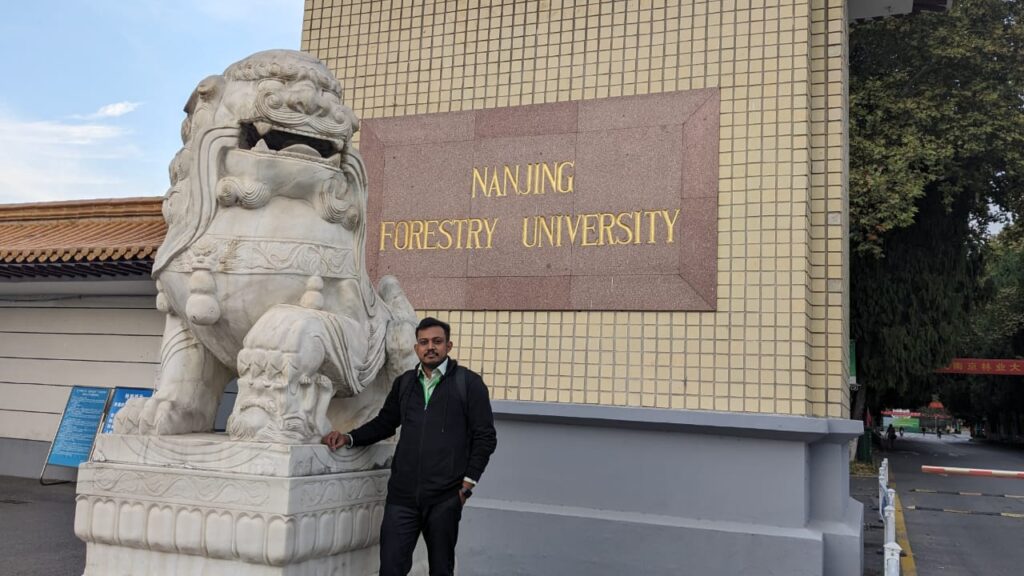
It was a tremendous honour for me to participate in a workshop organised by the APFISN Working Group, with a strong emphasis on capacity building for invasive management in the forests of the Asia-Pacific region, namely the APFISN and the International Society of Zoological Sciences. I want to highlight the exceptional execution of the program by Nanjing Forestry University, which surpassed any previous experiences I’ve had. Additionally, I express my gratitude for the generous financial support and operational efficiency provided by the program sponsors, who are leaders in fostering a global scientific mind-set. Attending my first international workshop was a truly enriching experience, and I am thankful for the opportunity. I was able to make significant academic contributions and benefited greatly from the diverse perspectives of fellow participants representing nine different countries. These individuals are actively engaged in their respective nations’ forest and forestry research, making the workshop a valuable platform for collaboration and knowledge exchange.
On the initial day of the six-day training workshop focused on ‘Identifying, Detecting, and Managing Pine Wood Nematode,’ Prof. Jian-Ren Ye and Prof. Jiang-Hua Sun effectively conveyed the gravity of the issues associated with the Pine Wood Nematode (PWN). As someone hailing from the Western Ghats of India, my eagerness to explore China’s subtropical pine plantations, particularly in Jurong, Jiangsu province, was palpable. However, these plantations differed significantly from the forest and plantation concepts in my home country. During the field sessions, Prof. Li-Hua Zhu provided insights into detecting PWN infestations in the field. We were organized into groups of three, to independently identify potentially infested trees. Witnessing the cutting down of an infested tree allowed us to observe the larval stage of the PWN vector, the Monochamus alternatus, for the first time. Our group collected wood samples for the laboratory work scheduled for the following days.
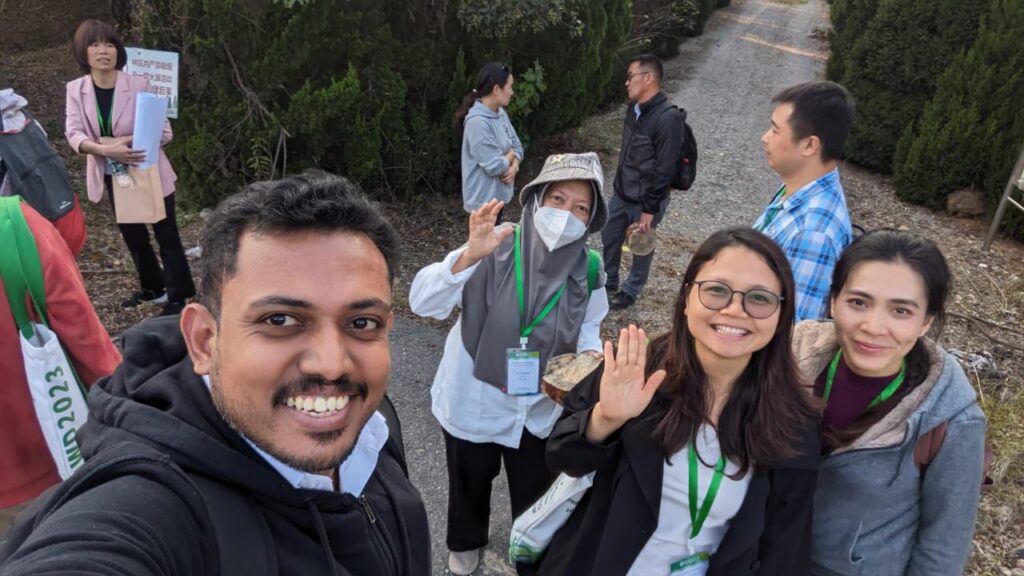
Field visit to Jurong, Jiangsu Province
At the conclusion of the initial day, companionship among all participants flourished, transforming us into a dynamic and engaged group, thanks to the warm and inclusive approach of Dr. Shiroma Sathyapala and Dr. Gary Man. On the same day, we engaged in cutting infested wood, with my lackluster kitchen skills causing a bit of a stir. Our visit to the Forest Health department’s laboratory at the College of Forestry and Grassland paved the way for the upcoming laboratory work.
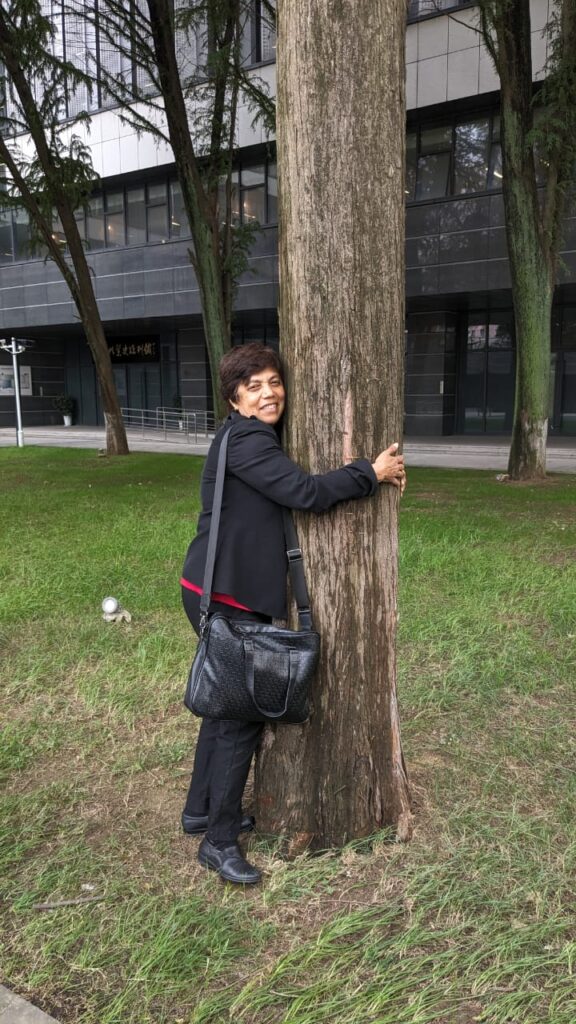
Dr. Shiroma and her affection towards nature
The anticipation of observing nematodes, which brought us together in China, heightened on the second day. By this time, I had forged connections with some Chinese friends, notably Zun, a postgraduate student, who actively guided us around the university and occasionally provided instructions for local shopping. Returning to the workbench on day two, we delved into the use of a compound microscope, with Prof. Zhu and Prof. Jia-Jin Tan elucidating the process of nematode extraction from wood and its identification. Sketching three different PWN species and morphological identification were also part of the day’s activities. Shiroma, as a diligent student and organizer, ensured comprehensive knowledge transfer, fostering active discussions that illuminated the intricate yet fascinating life story of PWN infestation.
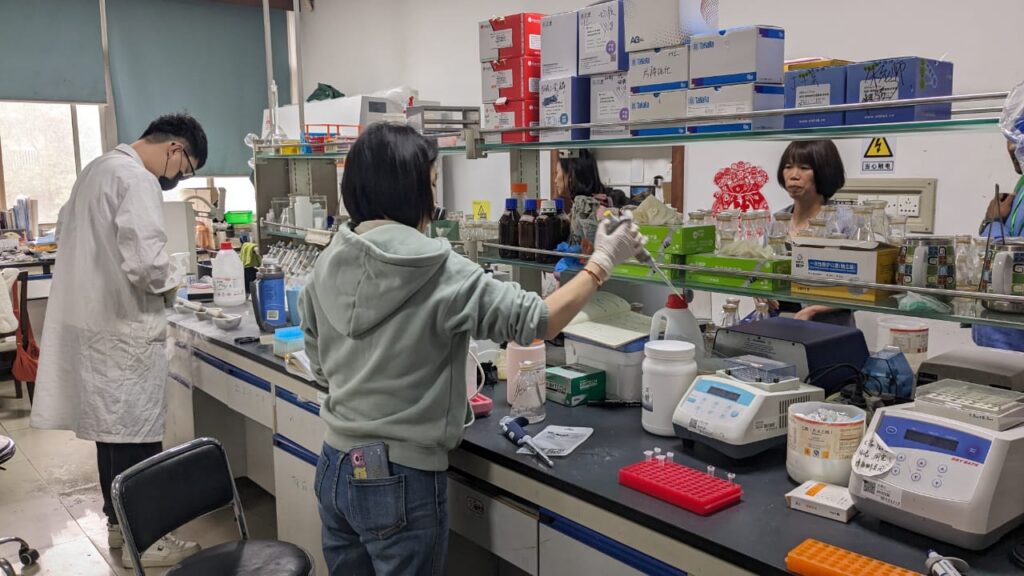
Lab works with Prof. Zhu
Prior to this workshop, my experience as a junior scientist in India exposed me to dealing with pest attacks on bulk-imported pine woods from the US, Africa, and China. While PWN infestation is currently confined to the sub-tropics, the risk of its spread in the context of climate change or pest adaptation cannot be overlooked. Quarantine practices in India, often compromised, need reinforcement in practice. The lecture on ‘Implementation of phytosanitary measures to reduce the spread of Pine Wood Disease’ provided valuable insights into effective plant quarantine checkpoints.
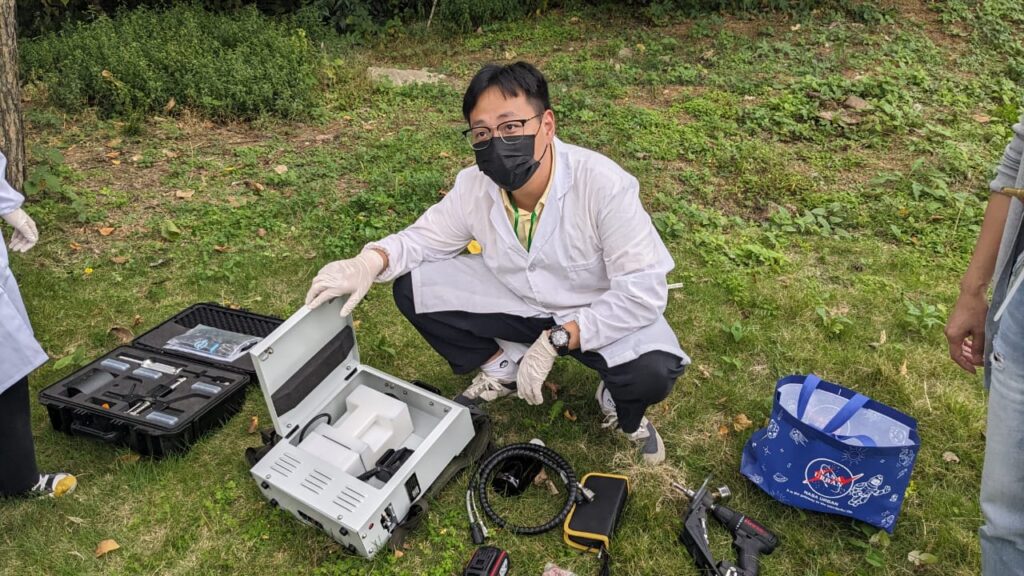
Mr. Zun demonstrating tree injection
In the subsequent days of the workshop, our confidence grew in identifying infestation symptoms, extracting and identifying nematodes through both morphological and molecular methods, and exploring various control techniques. The tree-injection method demonstrated by Prof. Zhu and her students expanded my knowledge base. Both automatic and manual curative injection treatments were adeptly showcased on a pine tree within the NFU campus.
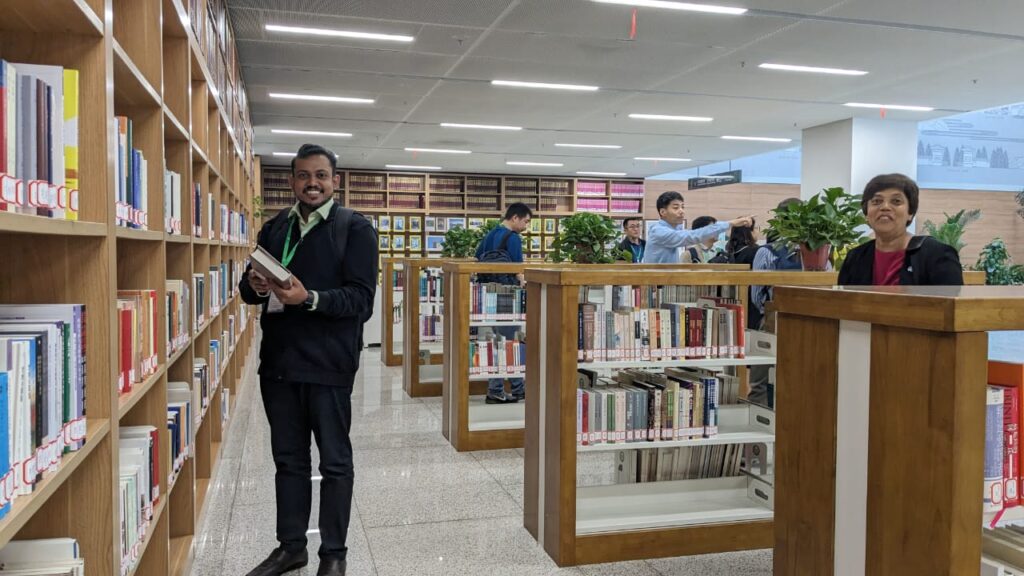
Inside the NFU Library
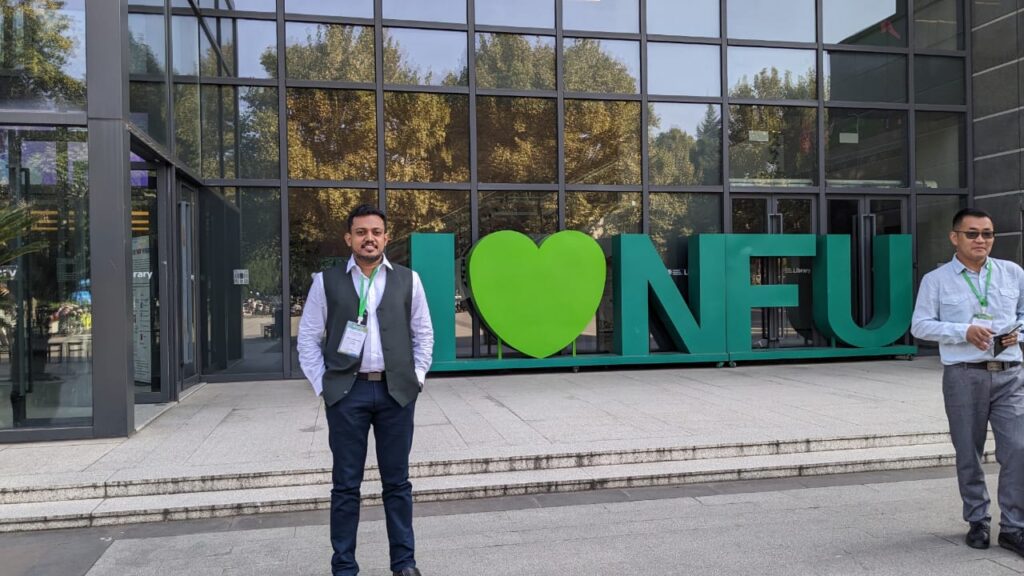
On October 26th, we actively participated in the IUFRO Pine Wilt Disease International Symposium. The sales exhibitions during the workshop presented opportunities to explore various pest and disease management devices and formulations, many of which are innovative and could be adopted in our country. A visit to the Insect Collection and Insectarium of Zhongshan Scenic Area, Nanjing, left me inspired to enhance the insect collection in my institution, KFRI.
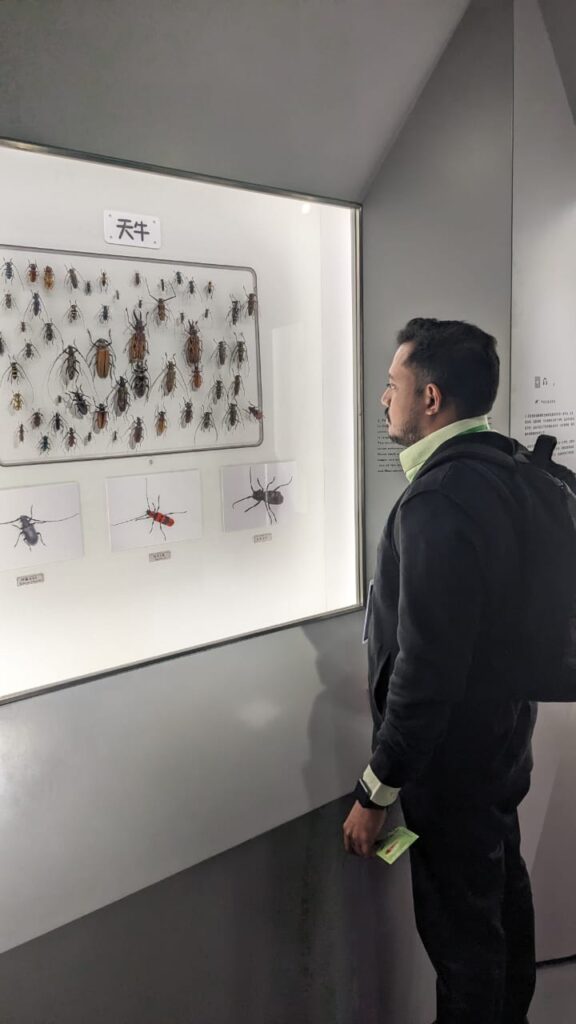
Insect collection and Insectarium of Zhongshan Scenic Area, Nanjing
As I reflect on the conference, I carry home several action plans for the coming year, including developing a robust understanding of existing quarantine policies and recommendations in India, examining whether longhorn beetles in my state carry any phytopathogenic nematode, monitoring the invasion of any Monochamus species in nearby softwood-importing mills, and exploring the possibilities of stakeholder meetings to improve current quarantine practices.
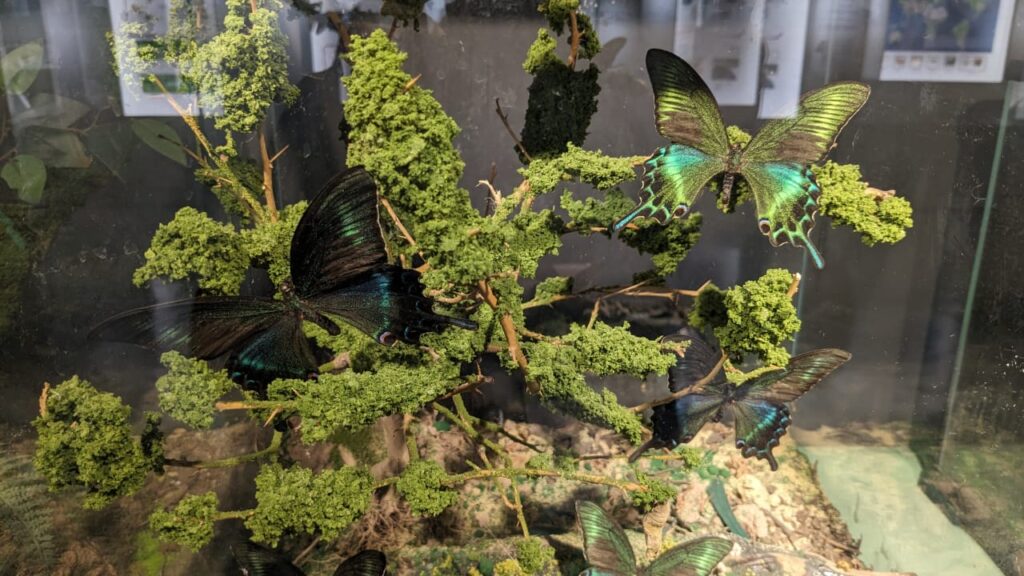
Butterfly specimens in its habitat display
I would like to express my heartfelt thanks to the organizers, hosts, sponsors, and supporting partners who played a crucial role in bringing the APFISN training workshop to fruition! My gratitude knows no bounds for all the speakers who generously shared their experiences and knowledge with us. To my fellow participants, I look forward to future collaborations as we continue working together.
